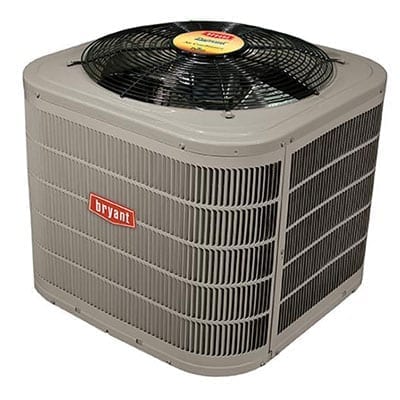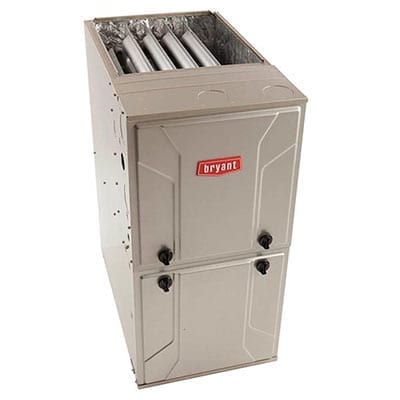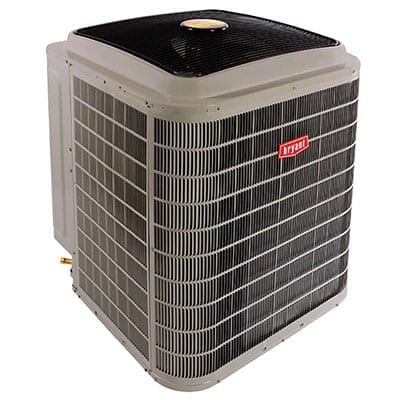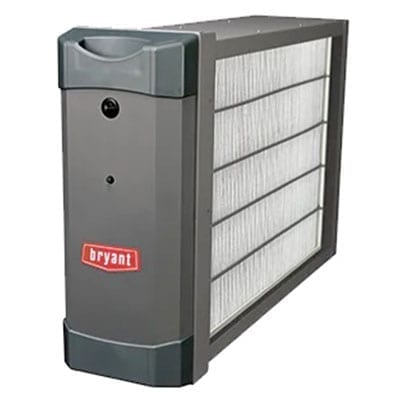Commercial HVAC for Bakeries
HVAC systems, including heat pumps, are vital for maintaining optimal conditions in commercial bakeries and pastry kitchens. These systems directly impact productivity and product quality in bakery stores. Understanding the basics of HVAC systems in bakery operations, including heat pumps, is crucial for efficient operations in retail and small bakeries as well as pastry kitchens. From managing heat transfer to controlling water vapor in process environments, HVAC systems play a pivotal role in cooling and dehumidifying indoor units in facilities. The right HVAC system can significantly enhance retail bakeries and pastry kitchens by ensuring consistent indoor temperatures and humidity levels essential for proofing dough and baking goods. This is achieved through the use of ovens and split systems. Split systems, commonly used in commercial bakeries and bakery stores, have indoor units strategically placed to regulate temperature variations during the cooling process. These HVAC setups are also frequently seen in other commercial buildings. This blog will delve into the types of commercial HVAC units suitable for retail bakeries, providing an insightful guide to support efficient heating, ventilation, and air conditioning solutions for bread, split systems, and pastry.
Understanding the Role of HVAC in Bakeries
Regulating Temperature and Humidity
Commercial HVAC systems are essential for bakery stores, as they help regulate the temperature and humidity levels both indoors and outdoors. These units are crucial for maintaining the ideal conditions for bakery products. Water is essential for retail bakeries, as it is crucial for the fermentation process of dough and creating an optimal environment for baking. In this article, we will discuss the importance of water in the bakery product. For instance, during the proofing process, where dough rises before baking, a consistent temperature is vital to achieve the desired texture and flavor. This is why it is important to have proper water flow between the indoor units and outdoor unit.
Proper air conditioning also helps in regulating humidity levels within bakery facilities by efficiently managing water condensation through split systems installed on the roof. This process ensures a comfortable and controlled environment for baking operations. Excessive moisture in the air can impact the quality of baked goods and contribute to mold growth, while overly dry conditions may cause ingredients to lose moisture too rapidly. To prevent these issues, it’s important to maintain a balanced level of humidity in your kitchen. Installing roof fans can help regulate the amount of water vapor in the air, ensuring optimal baking conditions.
Efficient HVAC systems ensure that water and fans are carefully controlled throughout different areas of a bakery, such as proofing rooms, ovens, and storage spaces. By installing roof fans, bakers can consistently produce high-quality products without being at the mercy of fluctuating environmental conditions.
Ventilation for Air Quality
In addition to temperature and humidity control, ventilation provided by commercial HVAC systems is critical for maintaining good air quality within bakeries. This includes proper airflow through the roof and the use of fans. Proper ventilation, including roof fans, helps remove odors produced during baking processes like yeast fermentation or when working with pungent ingredients like garlic or onions.
Moreover, effective ventilation aids in controlling airborne contaminants that may arise from flour dust or other particulates present in bakery environments. Fans are crucial for ensuring proper air circulation and reducing the concentration of these contaminants. These particles could potentially pose health risks to fans if not properly managed through adequate air exchange facilitated by HVAC systems.
Advantages and Disadvantages of Bakery HVAC Systems
Improved Product Quality
Bakery HVAC systems, including fans, play a crucial role in maintaining the quality of baked goods. Proper ventilation, temperature control, and fans help in preserving the freshness, texture, and taste of the products. For example, a well-maintained HVAC system with fans ensures that bread remains crusty on the outside while staying soft inside, pleasing fans. This leads to customer satisfaction and loyalty from fans due to consistently high-quality products.
Furthermore, an efficient bakery HVAC system with fans helps regulate humidity levels, preventing moisture-related issues such as mold growth on pastries or cakes. By creating an optimal environment for baking, these systems contribute to producing superior-quality goods that meet industry standards.
Increased Energy Efficiency
One significant advantage of commercial HVAC for bakeries is its contribution to energy efficiency. Modern bakery HVAC systems are designed with energy-saving features such as programmable thermostats and zoning capabilities. These features enable precise control over heating, cooling, and ventilation based on specific areas within the bakery.
For instance, during non-operational hours or low-traffic periods in certain sections of the bakery, zoning allows for reduced energy consumption by adjusting airflow accordingly. Advanced ventilation technologies aid in minimizing heat loss during baking processes while ensuring proper air circulation throughout the facility.
Enhanced Employee Comfort
A well-designed bakery HVAC system promotes employee comfort by providing a pleasant working environment. Proper temperature regulation helps prevent discomfort caused by extreme temperatures commonly found in industrial kitchens or bakeries without adequate climate control.
Moreover, effective air filtration systems incorporated into modern bakery HVAC units help maintain indoor air quality by reducing airborne particles like flour dust or other allergens often present in baking environments. This contributes to a healthier workplace for employees while also adhering to safety regulations related to indoor air quality standards.
High Initial Costs
Despite their numerous benefits, one notable disadvantage of implementing commercial HVAC systems in bakeries is their high initial costs. The installation of specialized equipment tailored to meet the unique requirements of a bakery can be financially demanding for small businesses or startups operating on limited budgets.
In addition to purchasing expenses, factors such as professional installation fees and any necessary structural modifications further add to the overall investment required when integrating commercial-grade HVAC solutions into a bakery setting.
Ongoing Maintenance Requirements
Another drawback associated with bakery-specific HVAC systems is their ongoing maintenance requirements. Regular upkeep is essential for ensuring optimal performance and longevity of these complex mechanical systems serving critical functions within food production facilities like bakeries.
Maintenance tasks may include filter replacements at prescribed intervals; inspection and cleaning of ductwork; periodic calibration checks for environmental controls; as well as addressing potential wear-and-tear issues affecting components like fans or compressors.
Potential Noise Issues
Lastly,potential noise issues represent another disadvantage linked with some types of commercial-grade bakery-specific HVAC units.
Essential HVAC Design Considerations for Retail Bakeries
Sizing of HVAC Equipment
When designing commercial HVAC for bakeries, it’s crucial to consider the proper sizing of the equipment. The size of the bakery and its production capacity directly influence the type and capacity of HVAC systems needed. For instance, a larger bakery with high production levels will require more powerful heating, ventilation, and air conditioning systems compared to a smaller retail bakery or little store.
Properly sized HVAC equipment ensures that the environment within the retail bakery is comfortable for both customers and employees. Oversized units can lead to short cycling, which reduces energy efficiency, while undersized units may struggle to maintain consistent temperatures in all areas of the bakery.
Considering factors such as peak customer traffic times can help determine appropriate sizing to ensure optimal performance during busy periods without overloading or underutilizing the system during slower times.
Zoning for Temperature Control
Another essential consideration in commercial bakery design is zoning. This involves dividing different areas within the retail space into separate zones with individual temperature controls. For example, an area where dough is proofed may require higher humidity levels than other parts of the bakery.
By implementing zoning strategies, it becomes possible to regulate temperature variations in specific zones based on their unique requirements. This not only enhances product quality but also contributes to energy efficiency by avoiding unnecessary cooling or heating in unoccupied or less critical areas.
Zoning also allows for customized comfort settings throughout various sections of a retail bakery based on their distinct needs – from baking areas that require precise temperature control to customer seating spaces where maintaining a comfortable ambiance is essential.
Optimal Cooling and Air Filtration Solutions for Bakeries
Refrigeration Systems
Commercial bakeries rely on refrigeration systems with precise temperature control to store ingredients and products. These systems ensure that perishable items such as eggs, dairy, and fresh fruit are kept at the ideal temperature to maintain their quality. For example, a bakery’s walk-in cooler must be able to maintain a consistent temperature of around 40°F (4°C) to preserve ingredients like butter and cream.
Refrigerated display cases are another crucial component in commercial bakeries, ensuring that finished baked goods stay fresh while on display. The ability to control humidity levels within these cases is also essential for preserving the texture of delicate pastries and cakes.
Air Filtration Systems
In addition to refrigeration, bakeries require effective air filtration systems to remove airborne particles such as flour dust and allergens from the environment. Flour dust can pose respiratory hazards for bakery workers if not properly filtered out of the air. Installing high-efficiency particulate air (HEPA) filters can help capture these tiny particles, maintaining clean indoor air quality.
Furthermore, proper ventilation is vital in commercial bakeries as it helps prevent the buildup of excess heat and moisture generated by ovens during baking processes. This not only contributes to a more comfortable working environment but also ensures that employees are breathing in clean, fresh air throughout their shifts.
UV Germicidal Lights
To further enhance indoor air quality within bakeries, some establishments utilize UV germicidal lights as part of their HVAC systems. These lights effectively eliminate bacteria and mold growth within the ductwork or other areas where they’re installed. By eradicating harmful microorganisms from the air supply, UV germicidal lights contribute significantly to maintaining a hygienic workspace in which food products are prepared.
Energy Saving Strategies for Bakery HVAC Systems
Regular Maintenance
Maintaining commercial HVAC systems in bakeries is crucial for ensuring energy efficiency. Regular maintenance, including cleaning and replacing filters, helps the system run smoothly. This prevents unnecessary strain on the system, leading to improved energy efficiency.
Proper maintenance also extends the lifespan of heat pumps and other components, reducing the need for frequent replacements. By keeping the HVAC system well-maintained, bakery owners can significantly lower their overall energy consumption and costs.
Programmable Thermostats
The installation of programmable thermostats is a smart strategy to enhance temperature control in bakery HVAC systems. These thermostats allow bakery owners to set different temperatures for various times of day or night based on their specific needs.
For example:
-
During operational hours when baking is at its peak, the thermostat can be set to maintain an optimal temperature.
-
After business hours or during non-operational days, such as weekends, the thermostat can be programmed to adjust temperatures accordingly.
This level of control ensures that energy is not wasted by overheating or overcooling the bakery space when it’s not necessary.
Natural Ventilation Methods
Utilizing natural ventilation methods whenever possible contributes significantly to reducing energy consumption in bakery HVAC systems. Opening windows strategically allows fresh air circulation without relying solely on mechanical ventilation systems.
Additionally:
-
Installing exhaust fans near ovens and other heat-producing equipment helps expel hot air efficiently.
-
Implementing window treatments like shades or blinds can help regulate indoor temperatures by blocking direct sunlight during warmer months.
These measures reduce reliance on artificial cooling mechanisms while promoting better airflow and maintaining comfortable indoor conditions for both customers and employees.
Types of HVAC Systems Suitable for Bakeries
Split System Air Conditioners
Split system air conditioners are ideal for small-scale bakeries with limited space. These systems consist of two main components: an outdoor unit that houses the compressor and condenser, and an indoor unit containing the evaporator coil. The outdoor unit is typically installed on the roof or outside the bakery, while the indoor unit is placed inside to provide cool air. This setup saves valuable interior space while effectively cooling the bakery.
These systems offer a cost-effective solution for smaller bakeries as they require minimal installation work and maintenance. They also allow independent control of each indoor unit, providing flexibility in managing different temperature zones within the bakery. For instance, one area can be kept cooler than others to preserve delicate pastries or chocolates.
Packaged Rooftop Units
Packaged rooftop units are well-suited for larger bakeries that require centralized cooling and heating throughout their expansive spaces. These units are installed on the roof of a building, freeing up valuable ground space within the bakery premises. They contain all necessary components—such as compressors, condensers, evaporators, and heating elements—in a single cabinet.
One key advantage of these units is their ability to handle large volumes of air efficiently. This makes them suitable for maintaining consistent temperatures across spacious baking areas where ovens generate significant heat levels during production hours. Packaged rooftop units often come with advanced filtration systems that help maintain high indoor air quality—a crucial factor in ensuring food safety compliance within bakeries.
Variable Refrigerant Flow (VRF) Systems
Variable refrigerant flow (VRF) systems offer precise temperature control in different zones within a bakery environment—an essential feature when dealing with various temperature requirements for specific baking processes and storage areas such as walk-in freezers or proofing rooms. VRF technology allows individualized climate control by adjusting refrigerant flow based on specific load requirements at different locations within the facility.
These systems use advanced inverter-driven compressors that modulate speed based on demand instead of cycling between off and full capacity like traditional HVAC systems do—resulting in substantial energy savings over time due to reduced power consumption during partial loads.
Maintenance and Troubleshooting of Bakery HVAC Systems
Regular Maintenance
To ensure the optimal performance of commercial HVAC systems in bakeries, regular maintenance is crucial. This involves filter replacement to uphold air quality and system efficiency. By replacing filters on a routine basis, airborne particles like flour dust are effectively captured, preventing them from clogging the system’s components. This practice maintains proper airflow throughout the bakery space.
Regular maintenance also includes cleaning the evaporator and condenser coils. These coils are prone to accumulating dirt and debris over time, which can lead to airflow restrictions if not cleaned periodically. By keeping these components clean, it prevents potential issues such as reduced cooling capacity or increased energy consumption due to restricted airflow.
Proactive maintenance helps in identifying any early signs of malfunction or leaks within the HVAC system. Addressing these issues promptly can prevent larger problems from developing that could disrupt bakery operations.
Troubleshooting Challenges
Several challenges may arise. One common issue is related to roof supply fans that help regulate air circulation within the establishment. Over time, these fans may experience wear and tear due to constant operation in an environment with high levels of moisture and heat from baking processes.
Another area for troubleshooting involves outdoor units that are exposed to various weather conditions such as extreme temperatures or humidity fluctuations. These external factors can impact the overall condition of outdoor units used in bakery HVAC systems.
Prompt identification and resolution of these challenges are essential for maintaining a comfortable working environment for bakery staff while ensuring that baked goods meet quality standards through consistent temperature control.
Financing and Replacement Considerations for Bakery HVAC
Exploring Financing Options
Exploring financing options like leasing or equipment loans can be beneficial. Leasing allows the bakery to use the HVAC system while making regular payments, which may be more manageable than a large upfront cost. Equipment loans provide funds specifically for purchasing the HVAC system, spreading the expense over time.
Considering energy-efficient models is crucial when looking into financing options. Energy-efficient systems not only reduce utility costs but also qualify for rebates or tax incentives. These financial benefits can offset some of the initial costs of installing a new commercial HVAC system in a bakery.
Evaluating Lifespan and Performance
Evaluating the lifespan and performance of existing systems is essential to determine replacement needs. Older systems may become less efficient over time, leading to increased operating costs and potential disruptions in bakery operations due to frequent breakdowns.
Assessing maintenance records and repair frequency provides insights into whether it’s more cost-effective to continue repairing an older system or invest in a new one. If repair costs are consistently high, it might be financially advantageous to opt for replacing the HVAC system with a newer, more efficient model that aligns with energy-saving initiatives.
When evaluating replacement needs, considering long-term operational costs is vital. Newer models often offer improved energy efficiency, resulting in lower utility expenses over their lifespan compared to older units.
Conclusion on Enhancing Bakery Operations with HVAC Systems
In conclusion, the efficient functioning of HVAC systems is crucial for optimizing bakery operations. Understanding the specific requirements and challenges faced by bakery environments, such as temperature control and air quality, is essential in selecting and maintaining suitable HVAC systems. By implementing energy-saving strategies, prioritizing regular maintenance, and considering financing options for replacements when necessary, bakeries can ensure a conducive environment for both the products and customers. With the right HVAC design and solutions in place, bakeries can enhance productivity, product quality, and customer satisfaction while also reducing operational costs.
For further insights on maximizing bakery efficiency through HVAC systems, exploring case studies or consulting with HVAC specialists can provide valuable practical knowledge and tailored recommendations for specific bakery setups.
Frequently Asked Questions
What are the key HVAC considerations for bakeries?
Bakeries require HVAC systems that control temperature and humidity to maintain product quality. Proper ventilation is crucial to prevent odors and maintain a comfortable environment for staff and customers.
How can bakery owners save energy with their HVAC systems?
Implementing energy-efficient equipment, regular maintenance, proper insulation, and smart thermostat usage can significantly reduce energy consumption in bakery HVAC systems.
Which types of HVAC systems are suitable for bakeries?
For bakeries, variable refrigerant flow (VRF) systems, rooftop units, or split system air conditioners are commonly used due to their ability to provide precise temperature control and efficient operation.
What are the common maintenance tasks for bakery HVAC systems?
Regular filter replacement, cleaning of coils and ductwork, inspection of refrigerant levels, and monitoring airflow are essential maintenance tasks to ensure optimal performance of bakery HVAC systems.
When should bakery owners consider replacing their HVAC system?
Bakery owners should consider replacing their HVAC system when it becomes inefficient or unreliable despite regular maintenance. Upgrading to a more energy-efficient model can also be beneficial in the long run.
Related Information
Commercial HVAC for Boutique Retail Shops
Commercial HVAC for Bookstores
Commercial HVAC for Bed-and-Breakfast Inns
Commercial HVAC for Barbershops
Commercial HVAC for Bagel Shops
Commercial HVAC for Baby Stores
Commercial HVAC for Auto Repair Shops
Commercial HVAC for Art Supply Stores
Commercial HVAC for Art Galleries
The Primary Services Provided By Our Local HVAC Company
Areas We Service
Click on the area below to see what your neighbors are saying about their recent experiences with our company.
Our Locations
14913 SE Kellogg Ave
Milwaukie, OR 97267, USA
4409 SE 24th Ave, Suite 35
Portland, OR 97202, USA




